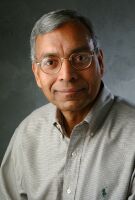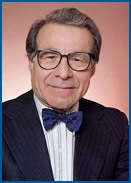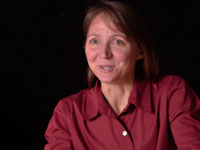
|
IMPORTANT DATES (2009):
|
Keynotes Speakers
PLEN-2: Cognitive Dynamic Systems, by Simon Haykin, McMaster University (Canada) Chair
Javier Ortega-Garcia, Universidad Autonoma de Madrid (Spain)
 Anil K. Jain is a University Distinguished Professor in the Departments of Computer Science & Engineering, and Electrical & Computer Engineering at Michigan State University. He received a B.Tech. from IIT, Kanpur (1969) and Ph.D. from Ohio State University (1973). His research interests include pattern recognition, computer vision and biometric recognition. His articles on biometrics have appeared in Scientific American, Nature, IEEE Spectrum, Comm. ACM, IEEE Computer, Proc. IEEE, Encarta, Scholarpedia, and MIT Technology Review. He has received a number of awards, including Guggenheim fellowship, Humboldt Research award, Fulbright fellowship, IEEE Computer Society Technical Achievement award (2003), W. Wallace McDowell award (2007), IAPR King-Sun Fu Prize (2008), and ICDM 2008 Research Contribution Award for contributions to pattern recognition and biometrics. He also received the best paper awards from the IEEE Trans. Neural Networks (1996) and the Pattern Recognition journal (1987, 1991, 2005). He served as the Editor-in-Chief of the IEEE Trans. Pattern Analysis and Machine Intelligence (1991-1994). He is a Fellow of the ACM, IEEE, AAAS, IAPR and SPIE. Holder of six patents in the area of fingerprints (transferred to IBM in 1999), he is the author of several books: Handbook of Biometrics (2007), Handbook of Multibiometrics (2006), Handbook of Face Recognition (2005), Handbook of Fingerprint Recognition (2003) (received the PSP award from the Association of American Publishers), Markov Random Fields: Theory and Applications (1993), and Algorithms For Clustering Data (1988). ISI has designated him as a highly cited researcher (his h-index is 58). According to CiteSeer, his book, Algorithms for Clustering Data is ranked # 91 in the Most Cited Articles in Computer Science (over all times) and his paper "Data Clustering: A Review" (ACM Computing Surveys, 1999) is consistently ranked in the Top 10 Most Popular Magazine and Computing Survey Articles Downloaded. He is an Associate Editor of the IEEE Trans. Information Forensics and Security and ACM Trans. Knowledge Discovery in Data. He is a member of the Defense Science Board Summer study on Capability Surprise and The National Academies committees on Whither Biometrics and Improvised Explosive Devices. He has been nominated to the Defense Science Board. Chair
Marcos Faundez-Zanuy, Esc. Univ. Politecnica de Mataro (Spain)
 Simon Haykin received his B.Sc. (First-class Honours), Ph.D., and D.Sc., all in Electrical Engineering from the University of Birmingham, England. He is a Fellow of the Royal Society of Canada, and a Fellow of the Institute of Electrical and Electronics Engineers. He is the recipient of the Henry Booker Gold Medal from URSI, 2002, the Honorary Degree of Doctor of Technical Sciences from ETH Zentrum, Zurich, Switzerland, 1999, and many other medals and prizes. He is a pioneer in adaptive signal-processing with emphasis on applications in radar and communications, an area of research which has occupied much of his professional life. In the mid 1980s, he shifted the thrust of his research effort in the direction of Neural Computation, which was re-emerging at that time. All along, he had the vision of revisiting the fields of radar and communications from a brand new perspective. That vision became a reality in the early years of this century with the publication of two seminal journal papers:
Cognitive Radio and Cognitive Radar are two important parts of a much wider and multidisciplinary subject: Cognitive Dynamic Systems, research into which has become his passion. Chair
Anna Esposito, Second University of Napoles (Italy)
Abstract
In spontaneous dialogues, the participants have instances of holding the conversational-turn and instances of turn-taking. A wide range of both verbal and non-verbal cues are considered to contribute, to some varying degree, to the coordination of this turn-taking. These cues include the content of the message, the acoustics of the speech signal, especially the prosody, changes in eye contact, changes in posture, the insertion of audible breaths, and many more. A subset of these cues is linked to actions of the respiratory system. This talk presents data on the respiratory dynamics underlying pauses where the speaker intends to hold the conversational turn, even in cases involving a relatively lengthy break in the speech stream. Results show that the actions in the respiratory system differ markedly from pauses elsewhere. These "holding" pauses are frequently characterized by a complete obstruction of the airflow and a rapid swing in muscular effort that can be either toward lesser or greater net expiratory effort. These underlying dynamics have implications for determining the set of cues that signal a hold in the conversational turn.
 |